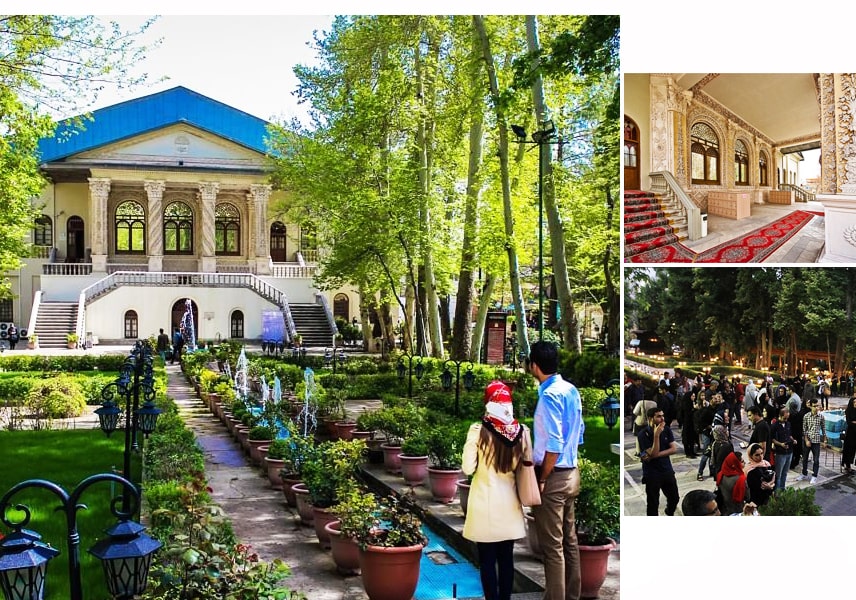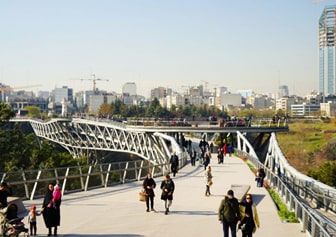DISCOVER the ICONIC places of tehran
Tehran iconic buildings tell you the best stories that Tehran has to offer. Discover why Tehran is known as the most vibrant city in Iran and how did this small city become so important in the 18th century? Get a closer look at Tehran’s most interesting and unique sites, and learn about the city’s long history and diverse culture. More than ten years of experience in Tehran gives us a unique insight into what is possible in your trip as well as finely tuned appreciation of what our clients want from their journey to Tehran. So join these tours and see Tehran as a Tehraner!
HISTORIC core
Tehran is situated within the historical region of Media (Old Persian: Māda) in northwestern Iran. Historic core of Tehran is the place of world heritage status, different museums, and Grand Bazaar that it is split into several corridors over 10 kilometres in length, each specializing in different types of goods, and has several entrances, with Sabze-Meydan being the main entrance. This area is the heart of Iran market and you will find a combination of modern an antiquity in a same time. You may experiment the ambiance of eastern bazaar, food, architecture, culture and people daily living in this area. If you are interested to buy Iranian carpets you may find the best quality and best price in this area because local people choose this district for shopping.

milad tower
Milad Tower is a multi-purpose tower in Tehran. It is the sixth-tallest tower and the 24th-tallest freestanding structure in the world. The tower is a part of the International Trade of Tehran, which also includes a five-star hotel, a convention center and an IT park. The lobby structure consists of six floors. The first three floors consist of 63 trade units, food courts, cafeterias, and commercial products exhibitions. Six elevators in three different sides of the shaft are used to transfer the visitors to the head of the tower at the speed of 7 meters per second, and you will see a panoramic view to the metropolitan up there. This is the head office of International Fajr Film Festival that is the most iconic film festival in Middle East.

azadi tower
It is one of the landmarks of Tehran, marking the west entrance to the city, and is part of the Azadi Cultural Complex, which also includes a museum underground. It was commissioned by Mohammad Reza Pahlavi, the last Shah of Iran, to mark the 2,500th year of the foundation of the Imperial State of Iran in 1971. The Azadi Museum is located on the basement floor. Inside the floor, there are black austere walls and proportions, and a concrete mesh forms the ceiling. Heavy doors open onto a crypt with subdued lighting issuing from showcases, each containing an object. The museum houses a number of gold and enamel pieces, painted pottery, marble and paintings. Approximately fifty pieces have been selected, each representing a particular period in Iran’s history. German artist Philipp Geist organized a projection mapping installation named Gate of Words at the Azadi Tower, on the occasion of the German Unity Day. The show was held from October 3 to 5, 2015.

taBIAT BRIDGE
The Tabiat Bridge is the largest pedestrian overpass Tehran. The 270 metre bridge connects two public parks and a museum complex by spanning one of the main highways in northern Tehran. It has won several awards, including the Popular Choice Prize for Highways & Bridges from the Architizer A+ Awards, a global architectural competition based in New York. Construction of the bridge over a large highway was described as a big challenge, with platforms and temporary tunnels built to ensure that nothing fell onto the road below. The bridge is a place for people to stay and ponder, not simply pass and you can find lots of food courts, cafeterias on the bridge and surrounding areas.

ROYAL COMPLEX
These are a combination of palaces from 19th century. Large parts of the complex are museums, which are accessible to visitors. Other parts are currently used to the Office of the President of the Islamic Republic of Iran. Theses complexes are operated by the Cultural Heritage Organization of Iran which is responsible for most of the artifacts, locations, and cultural aspects of the country. Sa’dabad Palace Complex, Niavaran Palace Complex and Golestan Palace are considered as the most famous of them and you can find architectural an cultural heritage of Iran in this well know places.

CINEMA MUSEUM OF IRAN
Located in historical complex located in the district of Tajrish (northern Tehran), the complex dates back to the reign of the Qajar dynasty. The origin of complex dates back to the reign of Mohammad Shah (1808–1848). The museum is a 10-minute walk down Valiasr Ave from Tajrish Sq; look for the broad walking street with a garden down the middle leading to the museum. It’s so amazing; you can watch movies, walking in garden drink coffee or food in Coffee shops. You can walk out of building to the street there are too many sellers for handmade stuff. Museum of Cinema is all about Iranian cinema. The highlight is a working cinema, Iran’s first, with ornate moulded plaster ceilings. New and classic Iranian films are screened here at 3pm, 5pm, 7pm and 9pm daily. You may ask our guide to visit this nice complex during Tajrish Bazaar tour.









